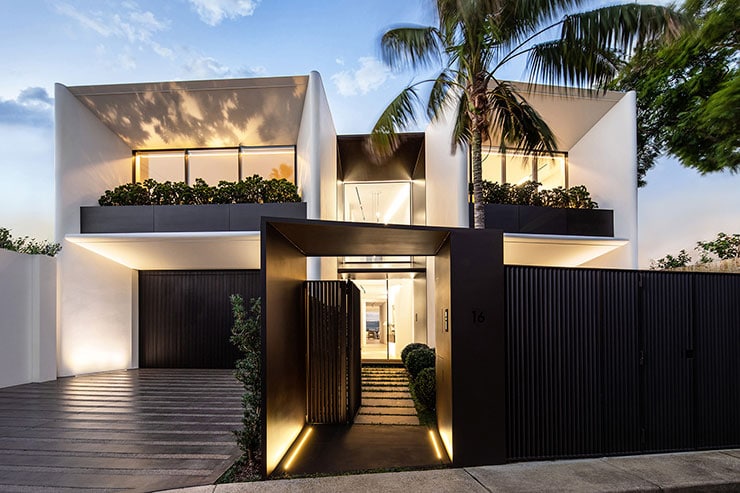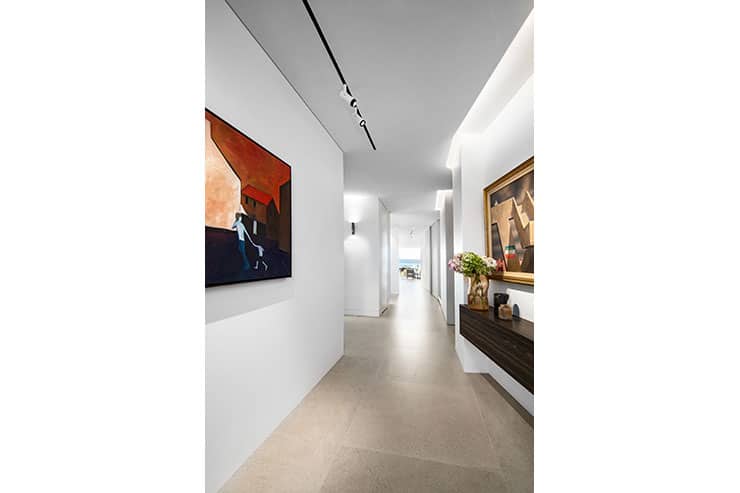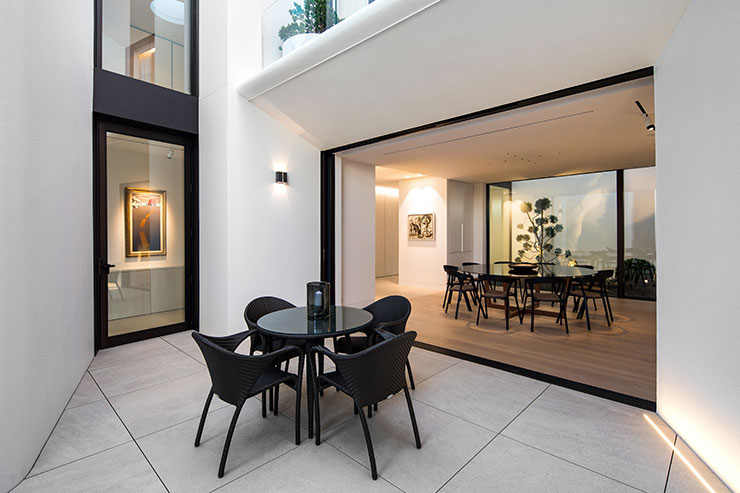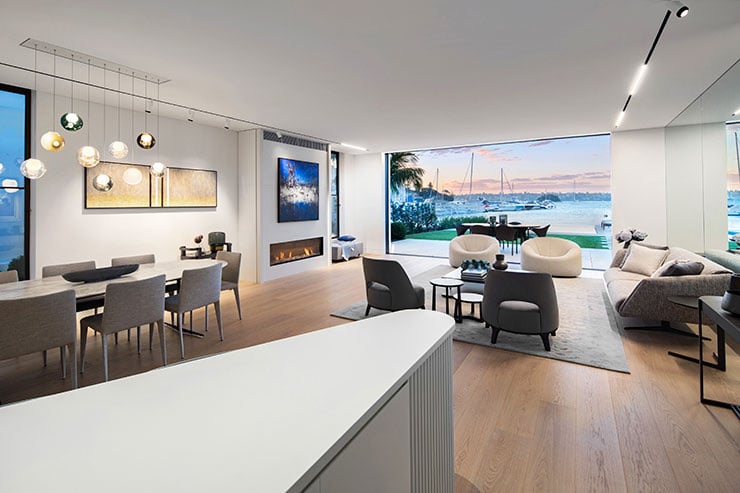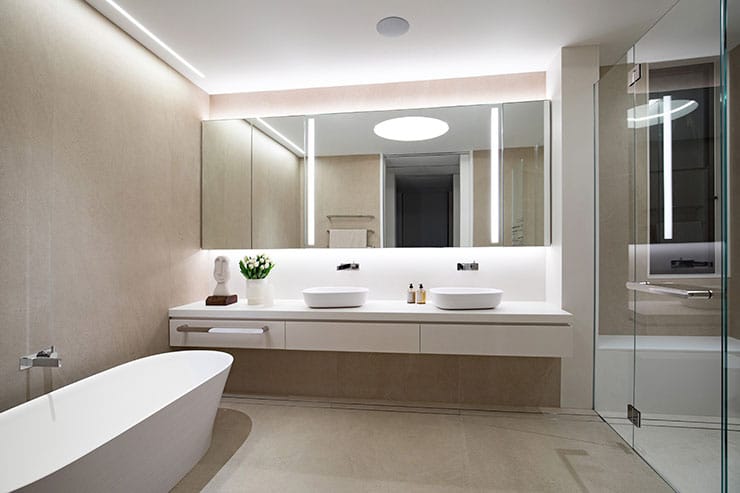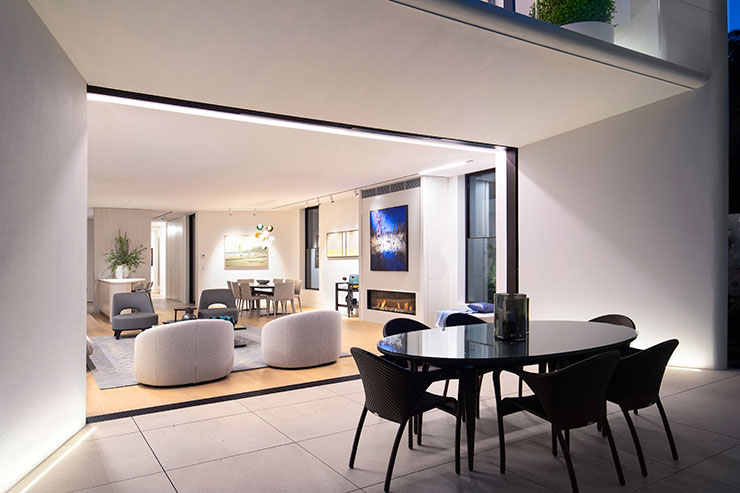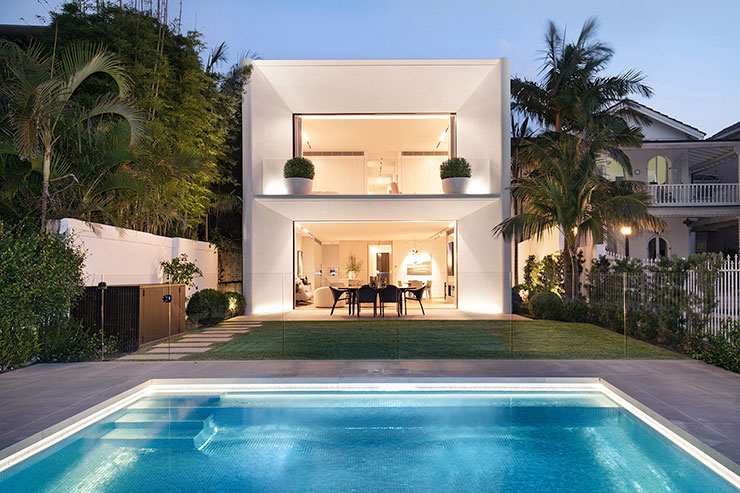- ABOUT
- JUDGING
- CONTACT
- MORE
- 2024 Entries
- Installations 2024
- Past Winners
- Subscribe
- [d]arc directory
- arc magazine
- darc magazine
Sydney Harbour Art House, Australia
ProjectSydney Harbour Art HouseLocationSydney, AustraliaLighting DesignCundall Light4, AustraliaArchitectFox Johnston, AustraliaInterior DesignMichelle Astudillo Interior Design, AustraliaAdditional DesignProbuilt ProjectsLighting SuppliersArkosLight, Filix, LiTEsource + Controls, Inlight, Onelight Australia, Sonic LightingPhotographyMitch Cameron Photography
Visual art is the process of making light visible in colour and form. The quality of light – its temperature, hue, saturation, and reflectivity – is fundamental to the final outcome, the impact on the surrounding environment, and how our eyes receive its meaning. So, when two Sydney art collectors created a home for themselves and their collection of artworks, lighting was an integral element in the interior design scheme.
The owners of the home do not have a static relationship with their artworks. The lighting solution uses track lighting with magnetic luminaires that can be individually dimmed via an app. This allows for works of different sizes and styles to be easily exchanged for others and the display altered to suit particular moods. There is also the option of pre-programmed scenes for a range of scenarios such as social occasions or quiet winter evenings.
Because light reveals or conceals different elements within an artwork, the lighting supports variation in how details are highlighted and foregrounded. The appearance of a painting or sculpture shifts subtly from day to night, hues and textures morph and alter.
The magnetic luminaires are also practical. They offer a safe, simple solution for the owners to adjust and rearrange the fittings. Safety by design was another foundation consideration for the home. By working closely with the interior designer, flourishes such as a circular skylight in the stairwell become elements within an overall subtle wayfinding and navigation strategy. A linear LED within the circle of the skylight at night brightens the stairs with diffused light without distracting from the night sky beyond the pane.
Similarly, in the landscaping, lighting floods down the walls and reflects into the rooms but not into the surroundings. This dark sky lighting approach is an important biodiversity consideration and works in harmony with the natural habitat of local native birds, bats and insect life.
The lighting design enhances the experience of living in the home by dissolving boundaries between indoors and exterior. The dining room, for example, features miniature super low glare LED luminaires in a cross pattern focussed on the dining table, the wall-washes for artwork lighting and the glowing illumination of the garden beyond to create an intimate and convivial space.
Throughout, harsh downlighting has been avoided. Instead, the source of brightness appears to emerge from the walls, from artworks and from pinpoint highlights on the judiciously chosen internal fittings. Because the home is designed for a full life involving visits from extended family, the grandchildren’s bedrooms incorporate backlit display cabinets for child keepsakes and cherished collections such as local fossils.
In contrast to similar properties, the Sydney Harbour Art House is not a grand, sprawling residence. It is not pretentious. Instead, it stands as an exemplar of what a modest footprint – and a modest budget executed with collaboration and effective engagement between client, lighting designer, interior designer, architect and builder – can achieve. A home to art, and a piece of art in itself.
